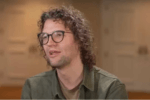Marijuana has long been known as the “gateway” drug.
All she wanted was to be liked, to fit in. So Jackie Waller (not her real name) at age 10, pinched the marijuana joint being passed around the room and took a long, deep drag. Then she did as she was told. She held her breath.
“I’m mostly white and I lived in a black neighborhood,” she says. “I didn’t want to be different.”
And Waller didn’t stop with one toke. At 16, she was snorting cocaine. At 19, as a mother of four, she switched from selling methamphetamine for dealers to cooking and selling her own.
Hooked on a $120-a-day habit, she became a “meth head” and craved a perpetual high. Her life became a series of arrests, two-week stays in jail and releases–followed by periods when she’d mix, use, sell and land in jail again.
“I was hooked,” Waller says. “I couldn’t stop.”
Her story is a familiar one–retold again and again, from the streets of New York to the beaches of Hawaii. A kid, chasing fun and encouraged by a friend, smokes pot, gets high. For some, that’s where the spiral begins.
“It’s a trap,” Waller says. “People who say marijuana isn’t addictive just aren’t paying attention.”
Experts call marijuana a “gateway” drug, a door to further illegal drug use.
Yet in the United States, where pills are cure-alls and the average age of first-time marijuana users has dropped from 19 to 13 in a generation, there is a growing movement to legalize marijuana. In neighboring Canada, possession of marijuana already is the equivalent of a traffic ticket. In the most recent U.S. Gallup poll on the subject, 34 percent of Americans favored legalizing marijuana.
It’s the highest show of support since pollsters first asked the question in 1969. Support for legalizing has hovered around 25 percent for the last 20 years.
“As we look at what makes sense, legalization will continue to gain support,” says Keith Stroup, director of the National Organization for the Reform of Marijuana Laws.
Slowly, as marijuana is gaining medicinal-drug status in individual states, Americans as a whole are reshaping their opinions of it. Many see it as less harmful than alcohol. At the same time, of the 4.5 million Americans with drug-dependency problems, 23 percent are teenagers–the highest percentage on record.
“We’ve never had a teen population with such a high rate of dependency before,” says Jennifer DeVallance, spokeswoman for the White House Office of National Drug Control Policy.
Where the Hits Keep on Comin’
Ben Bly, 18, smoked marijuana for the first time at age 15. “My friends were using it,” he says. “I didn’t want to at first. But I was curious. Just to see what it was like.”
Overall, teen marijuana use has dipped slightly in the last year, but twice as many eighth-graders are trying pot today compared with a decade ago, according to the National Household Survey on Drug Abuse. The survey shows that nationwide the number of kids who try marijuana triples between seventh and ninth grade.
“There’s no problem in picking up some marijuana,” Bly says. “It’s easy. I could call a couple guys I know right now and get some.”
And it’s not that expensive. For $20 he can buy 20 sacks of marijuana, each containing two grams of pot–the equivalent of about 1.4 ounces.
Indications are that across the country the drug is readily available to youth. In Cincinnati, a survey of teens showed that 50 percent of them said pot is “easy” to get. In Ohio overall, 37 percent of high school seniors used pot in the last year.
Admission rates to Ohio treatment centers for marijuana addiction increased 220 percent from 1993 to 1999, according to a survey taken by the state of Ohio. Of the 11,650 teens in Ohio programs, 56 percent were being treated for marijuana addiction.
In Hawaii, 11 percent of students in grades six through 12 need treatment for substance abuse. The percentage is among the highest in the country.
Within a year, Bly was smoking joints before school and again at lunchtime in his white, upper-middle-class community of Olympia, Washington. “It’s like you build up resistance,” he says. “You need to smoke more to get the same high.”
He ignored the risks of being caught. The odor, the red eyes–he didn’t care, he says. Eventually he failed a drug test during probation (he had been picked up for drinking while driving) and landed in a drug-treatment program.
“But it’s not like I’m addicted or anything,” he adds.
At a high school across town from Bly’s, English teacher Jeff Reagan says, “There is hardly a day that goes by that I don’t smell marijuana in the hallways.”
Eight arrests for marijuana possession were made last year at the high school where Reagan teaches. A few miles away in Tenino, a small logging town far removed from urban centers most people associate with drug problems, four students were kicked off the high school basketball team for smoking pot on the team bus while returning from a game.
Next Stop, Hillbilly Heroin?
When considering the profile of a teen drug abuser, no dominant characteristic emerges. Police say they’ve seen every variety of user–from the starting point-guard to the debate-team member to the flunking student. Students in rural areas are as likely as their urban counterparts to be involved with drugs, according to a recent study by Monitoring the Future, a survey taken recently by The National Institute on Drug Abuse.
In the tiny town of Hazard, Kentucky, almost everyone has a tragic story about “hillbilly heroin”–the prescription painkiller OxyContin. Newsweek magazine reported how the drug gripped this community of 4,800 people, causing the city park to become known as Pillville. Police arrested almost 200 dealers in 2001.
Paul Hamon, an Assemblies of God pastor in Hazard, told Newsweek: “I’m not saying we don’t have a drug problem, but it’s no worse than Louisville or New York City.”
His point is that the drug abuse in Hazard doesn’t seem much different from the drug abuse in other communities–such as Cadillac, Michigan, where seven junior high school students recently pleaded guilty to selling OxyContin.
Although alcohol remains the primary drug of choice among teenagers across the country, marijuana is firmly planted at No. 2.
“Around here, there is no question that smoking dope is on the rise,” says Jim Grosso, a high school counselor in Olympia, Washington, who went to college in California in the 1960s,when illegal drug experimentation skyrocketed in America.
“I don’t know for sure whether as many are smoking marijuana as when I went to college. I couldn’t say. I’m in an office, not at parties. But the stuff sold on the streets today is much more potent,” Grosso says.
It’s actually more than twice as potent as the marijuana of the 1970s, according to the U.S. Drug Enforcement Administration. Drug seizures monitored by the DEA show that levels of tetrahydrocannabinol, or THC–the hallucinogenic resin that supplies the high– have risen from approximately 2 percent in the 1970s to 5 percent in 2001. Because of the increased potency, today’s drug remains in a person’s system about seven days, not a day or two like the weed of 30 or so years ago.
Marijuana might even be the nation’s largest cash crop, surpassing corn, wheat and maize, which produce about $19 billion in revenue. In 2001, 724,000 people were arrested for marijuana violations, and 50,000 of them were sentenced to prison.
Also Potent–Legalization
Because of already crowded prison conditions, voters or legislators in many states are looking at reducing the charges for possession of marijuana. In Washington state, citizens voted to pass an initiative to make possession of marijuana the lowest enforcement priority–below public drunkenness, petty theft, and traffic or public-nuisance violations. Groups that endorsed the initiative included the King County Bar Association, the League of Women Voters and the King County Democrats.
Legalization of marijuana has been a platform issue for Democrats in King County for years.
“I’ll be honest with you, I smoked a lot of pot in college and after college and had no problem kicking it,” says King County Democrats Chairman Greg Rodriguez. “Look at the presidential races. Drugs can’t even be used as an issue because they all did it.”
Steven Sherman’s response is Just Pray No, an organization he founded that aims to unite Christians in prayer for drug addicts and their families. Every April for the last 13 years Sherman has called for Christians worldwide to pray and fast.
“We are seeking 1 million prayer warriors from around the world to join us in the battle,” he says.
Canada, with government-sponsored needle exchanges and legal injection sites for addicts, is on the opposite side of the United States in the so-called war on drugs. The war is not being waged in Vancouver, British Columbia, for example, where addicts in the city’s freewheeling eastside slum shoot up with heroin bought from the city government.
What Canadian advocates call “progressive” the Bush administration calls “immoral.” Washington has warned of tighter security at borders if marijuana is
decriminalized in Canada. “B.C. Bud,” as marijuana grown locally in Vancouver is known, is so potent and valuable it’s traded with U.S. smugglers kilo-for-kilo for cocaine.
As the age of first-time marijuana users goes down, the number of advocates for legalization goes up.
Last spring an estimated 80,000 people attended Hempfest, a weekend festival in Seattle aimed at changing the country’s marijuana laws. Though the Seattle police were out in force, there were no shortages of joints, pipes or puffs of marijuana smoke. In September 70,000 people similarly attended the Boston Freedom Rally to protest marijuana laws.
“The way we’re going, I think marijuana will one day be legal in this country,” says Waller, today the development coordinator for the Seattle Metro Women’s Teen Challenge. “Marijuana is like smoking a cigarette to the majority of drug users.”
The social norm creeping into society is that pot is harmless.
“I can tell you that’s a lie,” Waller says. When she cooked and sold methamphetamine, she also worked as an interviewer for a drug-screening agency that dealt with job applicants. She even sold meth to co-workers.
“It was crazy,” she says.
Waller’s recovery from drug addiction began in a jail.
“I found my way to a chapel, and I dropped to my knees and asked Jesus to be the leader of my life,” she says. “I gave Him my empty heart.”
Parenting Before Educating
For years, education has been used to curtail drug use. But the lessons taught by public school D.A.R.E. (Drug Abuse Resistance Education) officers actually made some students more curious about drugs.
With D.A.R.E. programs vanishing across the country because of costs and questions about effectiveness, a “reality-based” drug education pushed by people who want to legalize drugs has been used in classrooms in California the last few years. This program stresses that children can have “healthy relationships” with marijuana, PCP, cocaine, crack-cocaine and heroin.
It is the same approach to drug education that spiked adolescent drug use in the 1970s to unparalleled levels–from less than 1 percent in 1962 to 65 percent of high school seniors and 70 percent of young adults by 1979.
Angered parents organized some 4,000 drug-prevention programs nationwide, bolstered in the 1980s by first lady Nancy Reagan’s Just Say No campaign. The results were impressive. Between 1979 and 1992, regular drug use among adolescents and young adults dropped by two-thirds. Overall, users decreased from 25 million Americans to 12 million.
According to recent reports, however, teen drug use is again on the rise, adding fuel to the campaigns to legalize marijuana. Proponents for legalization argue pot isn’t addictive and that it’s not a so-called gateway to other drugs.
“That’s a lie from hell,” says Pam Bryan, a counselor for Cedar Park Church in Seattle. “It is addictive. And it sucks the life right out of you. Ask the parents of kids who smoke marijuana.”
The advice given parents by youth pastors is simple: Be aware; set consequences for breaking the rules; enforce the rules; love your kids enough to be their parents, not their best friends; be the adults they need to protect them.
“A parent needs to listen,” Bryan says. “And they need to pray.”
Typically, a teen uses drugs to fill a gap in his or her life.
“The kids I deal with are ones who haven’t been able to engage with something or someone,” says Karen Seals, coordinator of Friday Night Live, a mentoring program in California that attempts to link borderline kids with peers who are career-minded and grade-minded.
Seals says drug education doesn’t cut it.
“Studies show that the real, effective way to helping is just standing and talking with somebody,” she says. “It’s not just lecturing. It’s getting them engaged with community. And we engage people by building relationships with them.”
Smoking or Nonsmoking?
Advocating the legalization of marijuana is becoming a mainstream issue. In 1991, U.S. Surgeon General Joycelyn Elders suggested legalization might reduce crime. John Stossel, a reporter for ABC-TV’s 20/20 recently advocated legalization.
With the rising use of chemical drugs that were cooked in dealers’ living rooms, curtailing illegal drugs is no longer an effort at controling only what can be smuggled into the country. Now teenage users can brew their own drugs. Ecstasy, an amphetamine and hallucinogen, is the latest drug to hit college campuses.
Because it’s a pill, Ecstasy is seen as less threatening than a drug you must shoot or snort. However, it resulted in 40 deaths last year and is known to cause heart, liver or brain damage.
Use of the drug increased 2.6 percent last year among high school seniors, rising from 5.6 percent to 8.2 percent nationwide. One pill can be made for 25 cents and sold for $25.
“Almost always, it’s peer pressure that leads to kids taking drugs,” says Ingrid Kail, a drug counselor for 25 years. “And it’s all kinds of kids using. It’s an equal-opportunity problem.”
Since its beginning in the late 1970s Kail’s practice has shifted entirely from adults to teenagers.
“I’m working with a 14-year-old now who got caught smoking dope,” she says. “He guesstimates that 92 percent of the kids he knows are smoking pot.”
Prevention is possible. Studies show that parents are the No. 1 factor in stopping a teen from using drugs. Parents are not seen as just the first line of defense; they are sometimes the only defense.
“Parents have to be aware,” Bryan says. “Parents are a tremendous influence. But they have to take time to ask questions. Never assume it’s not something you’re child would ever do. It’s not like Christian families are immune.”
The Best Way to Kick The Habit
Counselors at Teen Challenge say their Jesus-centered rehab program offers the best help for drug addicts.
Joe Kiehn lived for his daily fix, knowing his cocaine addiction had a fatal attraction. Desperate, he cried to God for help.
“I knew I was going to die,” says Kiehn, who today–13 years after overdosing on cocaine–has turned his life around and is the program director of the agency that saved his life, Spokane (Washington) Teen Challenge.
Teen Challenge, a Jesus-centered program, is recognized worldwide for its success at helping drug addicts kick their dependencies. It was started in 1958 by David Wilkerson, a young, determined, rural pastor with a heart for New York street gangs whose story was told in the 1970s book and film The Cross and the Switchblade.
Today Teen Challenge is one of the leading drug-rehabilitation treatment organizations in the United States. A 1998 study by Northwestern University showed that 85 percent of Teen Challenge graduates remain drug free. Many, like Kiehn, end up working in a ministry.
“I have been given a completely new beginning and a deep burden for lost souls,” says Jackie Waller, a former drug addict now working with Teen Challenge in Seattle.
Teen Challenge is a nonprofit ministry that operates 150 centers in the United States and an additional 250 worldwide. The focus, which has not changed since Wilkerson first went to New York in the late 1950s, is God’s love and His power to change lives.
Today Teen Challenge is the oldest, largest and most successful program of its kind in the world. As the ministry has grown it has widened its emphasis from teens only to include adults of all ages.
Miriam Boskova, executive director of a women’s Teen Challenge facility in Seattle, always asks women in her program why they began taking drugs. Some say because of curiosity, others because of depression, and others because they didn’t know how to deal with their problems.
“So, they numb themselves with pills,” Boskova says. “They want to escape the reality.”
Boskova gives them a “why” that helps them face those problems.
“They see that their old ways didn’t work,” Boskova says. “We teach them new principles.”
Length of stay at a Teen Challenge center varies. A minimum of one year is required. Food, shelter and daily Bible studies are provided.
“We need a real commitment from you, a commitment that you really want to change,” Boskova says. “You will sacrifice. Change doesn’t come easy. You will pay a price for it.”
Prayer is a constant reinforcement.
“In my six years here, I have never seen a person go through withdrawal,” Boskova says. “We pray for them and pray for them. Not one of them has gone through the pains and the sweat. That’s the power of the Lord.”
Boskova thinks drug abuse is just a symptom of a bigger problem.
“I believe it reveals the sinful nature of man,” Boskova says. “We go deeper and deeper into sin.”
Boskova says the country’s inclination for finding cures in medications feeds the drug-abuse problem. It begins with prescribing Ritalin to the disruptive first-grader or over-prescribing an antibiotic to the runny-nosed fifth-grader.
“When they become 16, 17 and 18, they are looking for something more,” Boskova says. “The society itself is helping to create the problem. Kids grow up thinking that taking drugs is not so bad.”
Gail Wood is a Seattle-based writer and frequent contributor to Charisma.






Leave a Comment
You must be logged in to post a comment.